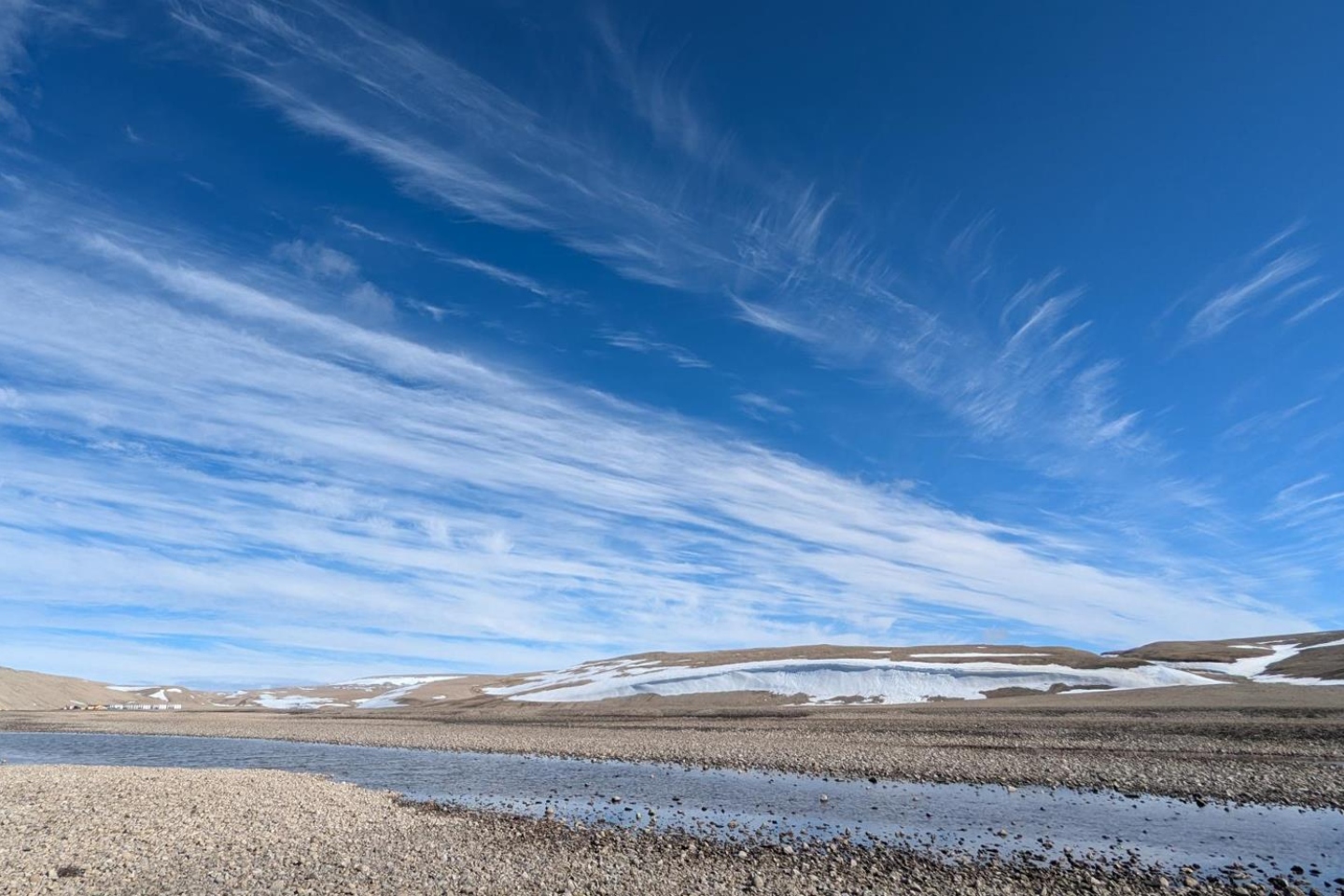American West Metals has discovered thick high-grade copper assaying up to 3.7 per cent from deep diamond drilling at the Cyclone deposit within its Storm project in the Canadian territory of Nunavut, indicating a big mineralised system. The discovery hole was collared about 110m south of the North Graben Fault that cuts off the south side of the Cyclone target.

American West Metals has discovered thick high-grade copper assaying up to 3.7 per cent from deep diamond drilling at the Cyclone deposit within its Storm project in the Canadian territory of Nunavut, indicating a big mineralised system.
The discovery hole was collared about 110m south of the North Graben Fault that cuts off the south side of the Cyclone target. Management says its analyses indicate the likely existence of extensive, deep, stacked, stratigraphic, sediment-hosted copper mineralisation.
The drillhole was inclined at about -80o to the north – that is, back towards the Cyclone deposit, but remaining well outside its resource – and parallel to the interpreted steeply-dipping plane of the North Graben Fault.
It intersected 10m at a grade of 1.2 per cent copper and 1.6 grams per tonne silver from 311m downhole. The hit also includes 3m at 2.2 per cent copper and 1.5g/t silver from 315m downhole, which in turn includes 0.5m going a handsome 3.7 per cent copper and 3g/t silver from 315.5m.
That places the intercept about 320m vertical depth below surface, while the bottom of the Cyclone deposit sits at about 115m below surface. The drillhole was completed about a month ago, along with another diamond hole about 1.5km to the south/south-west that was collared on the northern side of the South Graben Fault.
Both holes were designed to test key geological targets at Storm and for the possibility of new zones of copper mineralisation within what was by then being termed a “Deep Copper Horizon” identified in scout drilling last year. The program intersected thick intervals of visual copper mineralisation, interspersed with thinner slices of strong visual copper, indicating a possible stacked or laminated sediment-hosted system at Storm.
The latest hole is interpreted as having the same copper-mineralised horizon as that which hosts the Cyclone deposit at shallower depth. But most importantly from a potential resource target estimation scale, the hole has intersected copper at the same depth as encountered in almost all other copper intercepts in every other drillhole in the broadly-spaced pattern within the extensive Central Graben.
American West Metals managing director Dave O’Neill said: “The drillhole has hit what we believe to be the first indication of Cyclone Deposit style mineralisation at depth. To achieve these results in our very first deep drill hole this year, and whilst testing a geological concept, speaks to the untapped potential of the Storm area and confirms our assumptions that the deeper horizons have the potential to host significant quantities of economic copper mineralisation.”
googletag.cmd.push(function() { googletag.display('bn-dfp-article-lb2-advert'); });O’Neill says zeroing in on the strongest parts of the mineralisation will be the focus of the company’s deep exploration going forward.
Copper mineralisation in the area is hosted near the top of a thick sequence of fractured dolomitic mudstone of the Allen Bay Formation, which is the principal host of the copper mineralisation within the wider Storm project ground. The company says the stratigraphic position near the top of the formation is the host for Cyclone, which is the largest deposit discovered in the area to date.
The discovery hole was drilled to a downhole depth of 385m and intersected 22m of breccia and vein-style copper mineralisation, which includes two sub-zones of stronger mineralisation.
The upper 2m-thick zone contains veinlets of chalcocite (copper sulphide) in a moderately-fractured zone from 302.5m, while the strongest mineralisation was identified between 311m and 321m. The intercept exhibits the typical mineralogical profile of sediment-hosted copper mineralisation, with a high-grade native copper and chalcocite core enclosed by peripheral chalcopyrite (copper-iron sulphide) and other less copper-rich sulphide minerals.
About a month ago, management said “every fault, every space, every gap in the rocks that we hit within the deep horizon, has copper in it”. At the current rate of discovery, the prospect of much or all of the vast Central Graben to carry potential resource-grade copper mineralisation is looking increasingly likely.
It seems that sentiment could well be reinforced when results come in next week for American West’s second deep stratigraphic drillhole, which intersected 99.2m of visual copper sulphides when testing the Central Graben just north of the South Graben Fault.
Is your ASX-listed company doing something interesting? Contact: matt.birney@businessnews.com.au
















